How Much Does It Cost to Install Vinyl Siding?
First created in the 1950s as a lower-maintenance alternative to wood, vinyl siding is one of the most frequently installed types of siding. Vinyl is a type of plastic, polyvinyl chloride, that has the color impregnated completely through each piece. Unlike wood, this means that it does not need to be painted to maintain its color and appearance. Vinyl siding comes in a wide range of different styles and colors and mimics many types of materials and styles. Therefore, there is a wide range of costs associated with its installation.
The national average range for installing vinyl siding is between $7,500 and $16,000, with most homeowners spending around $11,000 to install 1,500 sq.ft. of vinyl siding in a mixture of wide lap siding on the lower half of the house and shingle-look planks on the upper story. This project’s low cost is around $4,500 for 1,000 sq.ft. of installed thin horizontal vinyl lap siding. The high cost is around $25,000 for 2,000 sq.ft. of insulated vinyl siding installed in a mixture of lap siding and shingle-look with faux-stone accents.
Vinyl Siding Prices
| Vinyl Siding Installation Costs | |
|---|---|
| National average cost | $11,000 |
| Average range | $7,500-$16,000 |
| Low-end | $4,500 |
| High-end | $25,000 |
In this guide
Cost to Vinyl Side a House by Home Size
Vinyl Siding Cost per Square
Vinyl Siding Cost per Box
New Vinyl Siding Cost by Width
Average Cost of Vinyl Siding by Type
Average Cost of Vinyl Siding by Style
Vinyl Siding Prices by Brand
Labor Costs to Install Vinyl Siding
Average Cost to Replace Vinyl Siding
Cost to Install Vinyl Siding Over Existing Siding
Painting Vinyl Siding vs Replacing
Vinyl Siding Colors
Pros and Cons
Maintenance
Vertical Vinyl Siding Cost vs Horizontal
Brick vs Vinyl Siding Cost
Aluminum vs Vinyl Siding
Fiber Cement Siding vs Vinyl
Enhancement and Improvement Costs
Additional Considerations
FAQs
Vinyl Siding Installation Cost by Project Range
Vinyl Siding Cost per Square Foot of Siding
Vinyl 1 siding is both sold and installed by the square foot. The material averages between $2 and $10 for the material and an additional $2.15 to $5.25 in costs for installation, making the total cost range for vinyl siding between $4.15 and $15.25 a square foot including all materials and labor costs. The large discrepancy in the cost to vinyl side a house is due to the many different types and styles of vinyl, which have greatly varying costs. Thin low-quality vinyl horizontal planks have the lowest costs, while insulated designer vinyl that looks like shingles 2, stone, or brick costs the most. Below are the average costs to install vinyl siding on differently sized areas.

| Square Feet | Average Cost Range (Installed) |
|---|---|
| 500 sq.ft. | $2,075 - $7,625 |
| 1,000 sq.ft. | $4,150 - $15,250 |
| 1,500 sq.ft. | $6,225 - $22,875 |
| 2,000 sq.ft. | $8,300 - $30,500 |
| 2,500 sq.ft. | $10,375 - $38,125 |
Cost to Vinyl Side a House by Home Size
When it comes to installing vinyl siding, it is crucial to know the home’s exterior size. Many homeowners do not know exactly how many square feet of siding they need but are aware of the square footage of their home. These two are not necessarily going to match. Footprint 3, height, and configuration can change the total siding amount you need to cover your home, regardless of the square footage. For an average one-story house, expect to pay between $4,000 and $32,500, depending on the overall square footage and material. Below are the cost ranges for common house size so that you can better determine your home’s average costs.

| Square Footage of the Home | Average Cost Range (Installed) |
|---|---|
| 1,000 sq.ft. | $4,000 - $18,500 |
| 1,500 sq.ft. | $5,000 - $22,000 |
| 2,000 sq.ft. | $5,700 - $25,500 |
| 2,500 sq.ft. | $6,900 - $28,000 |
| 3,000 sq.ft. | $7,500 - $32,500 |
Cost to Vinyl Side a 1,000 Sq.Ft. House
The average cost to install vinyl siding on a 1,000 square foot house ranges from $4,000 to $18,500. A house this size will typically have two to three bedrooms and one to one and a half bathrooms. Since a house this size is usually on the smaller side, it usually has a single story. This can make the overall cost of your siding project less expensive overall.
Vinyl Siding Cost for 1,500 Sq.Ft.
On average, it costs between $5,000 to $22,000 to install vinyl siding on a 1,500 square foot house. A house this size will typically have two to three bedrooms, one or two full bathrooms, and usually a combined kitchen-dining room space. When measuring your siding, your contractor will work around your windows and doors, so the overall cost will depend on how many of those you have, roof height, eaves 4, and other features.
Cost of Vinyl Siding for a 2,000 Sq.Ft. House
When installing vinyl siding on a 2,000 square foot house, expect to pay between $5,700 and $25,500. Overall costs vary depending on the number and layout of the windows, gables, and doors and the number of stories. A house this size will normally have three to four bedrooms, two to two and a half bathrooms, a full kitchen, dining room, and main living room.
Vinyl Siding Cost for a 2,500 Sq.Ft. House
It costs between $6,900 to $28,000 on average to install vinyl siding on a 2,500 square foot home. A space this size will generally have three to four bedrooms and two to three full bathrooms, often with a master bath suite. It will also have a larger kitchen, dining room, and living room. Homes of this size tend to be at least two stories, which also influences costs.
Cost of Vinyl Siding for a 3,000 Sq.Ft. House
You can expect to pay between $7,500 and $32,500 to install vinyl siding on a 3,000 square foot house with one story. A house this size will generally have at least four bedrooms, larger kitchens and living spaces, and two to four bathrooms, with one being a master suite. Homes of this size can have many layouts and configurations, impacting your siding costs.
Vinyl Siding Cost per Square
When installing siding, one common unit of measurement used for materials is a square of siding. This amount of siding covers 100 square feet of wall space, which would be a 10-by-10 section of an exterior wall. To calculate the squares of siding material needed, you should first figure out the wall area in square feet and subtract the square footage of any exterior doors and windows. Then, divide that number by 100 to get the average number of squares. You may need to round up to the nearest whole square. When it comes time to order siding, your contractor will probably order a bit over that amount to account for any waste. On average, a square of vinyl siding costs between $200 and $1,000 for materials alone, while the costs of a square installed average $415 to $1,525.
Vinyl Siding Cost per Box
Another unit of measurement you often see is a box of siding. A box contains two squares of siding and generally costs between $400 and $2,000. Therefore, a single box can cover up to 200 square feet of an exterior wall. When measuring for your siding installation project, be sure to take your windows, doors, and other areas of waste into consideration, as you won’t need siding for those areas. Most people find they need between 7 and 9 boxes to side their home. Because you cannot split a box, round up to the nearest whole box. It is also a good idea to keep some leftover material for future repairs. Depending on how close you are to a whole box, you may want to purchase an extra to be sure.
New Vinyl Siding Cost by Width
Depending on the vinyl siding type and style and the manufacturer, it can be measured and sold in a few different ways. Most vinyl siding is designed in groups of profiles, which determines how many “rows” are in a single plank of siding and how wide each plank is. While wood siding is installed one piece at a time, vinyl goes up two, three, or four rows at a time, all joined together making up a profile in one larger piece.
Most lap or horizontal siding has a profile width of 4 inches, with some having 5-inch profiles. Sometimes, a section or group of rows have an overall width of 6 or 7 inches. The individual “rows” within a plank may only be 3-inches wide, but the total section width is used in the description.
Shingles, shakes 5, and faux brick and stone made of vinyl will also be sold in large sections or panels that may measure up to 12 inches in width, but each profile or individual piece of “stone,” “wood,” or “brick” may only measure 2 to 6 inches, depending on the style. Because of these variations in how the vinyl is made and categorized, there can often be a lot of overlap in costs. The width of your siding will not have much, if any, impact on the project cost. The style and type of vinyl you choose typically matters more. However, you may find this measurement has a correlation with the overall price because specialty styles are often wider than standard styles. It is also important to consider that the wider the plank, the less labor is necessary to cover the home, decreasing labor costs.

| Siding Width | Typical Styles | Average Costs per Sq.Ft. (Materials Only) |
|---|---|---|
| 4 Inches | Horizontal lap, faux brick | $2 - $10 |
| 5 Inches | Horizontal lap | $2 - $10 |
| 6 Inches | Shingle, shake, faux stone | $3.50 - $10 |
| 7 Inches | Shingle, shake, faux stone, log-look | $3.50 - $10 |
| 12 Inches | Board and batten, faux stone | $5.50 - $10 |
Average Cost of Vinyl Siding by Type
In addition to different styles and widths, vinyl siding is available in various types. Traditionally, vinyl siding was always hollow with nothing inside or behind the thin plastic of the planks. It is still available that way, but it is also sold in insulated versions, as well as thicker premium materials that are more durable than the original thinner plastic. Because the very thin hollow planks do not always hold up as well in very cold or hot weather, the premium is often recommended for most homes. Each material has a range of costs, depending on the size and style:

| Type | Average Costs per Sq.Ft. (Materials Only) |
|---|---|
| Hollow | $2 - $5 |
| Premium | $3.50 - $9 |
| Insulated | $8 - $10 |
Hollow Vinyl Siding Prices
Hollow vinyl siding is the least expensive at $2 to $5 a square foot. This is a thin plastic siding, about 0.035 inches thick. You can install this siding over rigid foam insulation or simply over house wrap. This vinyl siding can be used as a rain screen in high rainfall areas because there is nothing behind it, and there is a cavity between it and the wall. Hollow vinyl siding is usually seen as the least durable, but it is also one of the most common types. If you live in an area that sees freeze/thaw cycles or extreme heat in the summer, this type is more likely to crack or melt than the other variations.
Premium Hollow Vinyl Siding Prices
Premium vinyl siding costs between $3.50 and $9 a square foot on average. This is a slightly heavier vinyl, ranging from 0.04 to 0.05 inches in thickness. This makes it more durable than standard hollow vinyl siding. Premium vinyl is less likely to crack in cold climates than the thinner hollow material. It can be installed over rigid foam insulation or house wrap. It also acts as a rain screen in heavy rainfall areas because while the material is thicker, it is still hollow, so the rain can flow behind the siding without obstruction.
Insulated Vinyl Siding Costs
Insulated vinyl siding is the most costly at $8 to $10 a square foot. This premium vinyl has rigid foam insulation already attached to the back of the planks or panels. The insulation fits tightly to the vinyl and is more effective than applying insulation to the walls. This type of vinyl cannot operate as a rain screen because it no longer has space behind the planks, but it is a better choice for colder climates than standard hollow vinyl siding. If you live in an area with heavy rainfall, you need to install a separate rainscreen behind this vinyl. Because vinyl on its own is not a good insulator, it is recommended that some type of insulation be used with it to improve the energy efficiency of the home and create a tighter building envelope.
Average Cost of Vinyl Siding by Style
One of the most versatile aspects of vinyl siding is how it can be formed in many different ways. Siding is created with molds so that it can mimic the look of wood lap, brick, and stone siding, as well as shingles, shakes, and even log-look. The color goes straight through the vinyl, meaning you can get good texture on the material without it impacting the color or appearance. The vinyl siding style is one of the biggest driving factors behind its cost:

| Style | Average Cost per Sq.Ft. (Materials Only) | Average Cost per Sq.Ft. (Installed) |
|---|---|---|
| Traditional Lap | $2 - $6 | $4.15 - $11.25 |
| Smooth | $2 - $6 | $4.15 - $11.25 |
| Beaded | $2 - $6 | $4.15 - $11.25 |
| Dutch Lap | $2 - $6 | $4.15 - $11.25 |
| Clapboard | $2 - $6 | $4.15 - $11.25 |
| Board and Batten | $3.50 - $9 | $5.65 - $14.25 |
| Vinyl Shake | $3.50 - $9 | $5.65 - $14.25 |
| Scalloped | $4 - $9 | $6.15 - $12.25 |
| Log-Look | $5 - $10 | $7.15 - $15.25 |
| Brick-Look | $5 - $10 | $7.15 - $15.25 |
| Stone-Look | $5 - $10 | $7.15 - $15.25 |
Traditional Lap Vinyl Siding Prices
Traditional lap vinyl siding is one of many types of horizontal lap siding and costs between $2 and $6 a square foot, depending on the type. Installed, this costs $4.15 to $11.25 a square foot. Traditional lap looks similar to a classic horizontal lap siding from a distance, with an embossed wood texture. It is made to be thicker at the bottom of each plank, so the different planks form wedges. There are usually little-to-no decorative elements to this siding type. The overall sections can be up to 6 inches wide, but generally, the planks themselves are 3 to 4 inches in thickness.
Smooth Vinyl Siding
Smooth vinyl siding is usually sold as a type of lap siding and ranges from $2 to $6 a foot like most other laps. The average cost of this material installed is $4.15 to $11.25 a square foot. A lap siding is any type of horizontal siding where the top plank overlaps the one below. Smooth lap means that there is no wood grain texture to the planks, which differentiates it from the traditional lap. This option is purely aesthetic and does not influence the quality or performance of the siding. Some people find smooth vinyl to be slightly easier to clean and maintain than textured, but apart from that, there is little difference between them. Like most lap sidings, smooth lap is usually found in 4 to 5-inch widths.
Beaded Vinyl Siding Cost
Beaded vinyl siding is another type of horizontal lap siding, costing between $2 and $6 a square foot on average. The average cost for this material installed is $4.15 to $11.25 a square foot. The bead in this siding is an indent along the bottom of each lap. This creates a lip with a deep shadow that adds visual interest to the planks. The shadow helps break up the siding slightly, giving it a more interesting appearance. Beaded siding is not as common as other types of lap siding and is not made by all brands, so your color options may be limited. Like other lap sidings, it is typically 4 to 5 inches in width.
Dutch Lap Vinyl Siding Cost
Dutch lap vinyl siding costs between $2 and $6 a square foot, depending on the type. Installed, this siding costs $4.15 to $11.25 a square foot. Dutch lap siding is arguably one of the most popular siding styles in the U.S. This is a type of horizontal siding that has a concave upper section on the lap. The section of the plank above the lapping over the concave area casts a slight shadow onto the plank below. This makes the siding more interesting without needing any additional decorative elements. Dutch lap siding is usually between 4 and 5-inches thick and comes in both hollow and insulated types.
Clapboard Vinyl Siding Prices
Clapboard vinyl siding ranges from $2 to $6 a square foot, depending on the type. Installed, it costs $4.15 to $11.25 a square foot. Clapboard is one of the oldest types of plank siding used in the U.S. Therefore, many people think that any horizontal lap siding is clapboard, but it is a distinct type. Each plank is thicker at the bottom than at the top, creating a wedge. Clapboard vinyl siding comes in many colors and smooth and wood grain finishes. It can be hollow or insulated and is usually available in standard and premium thicknesses.
Board and Batten Vinyl Siding Cost
Board and batten siding made of vinyl is $3.50 to $9 a square foot on average. Installed, the average cost of this material is $5.65 to $14.25 a square foot. Board and batten is one of the oldest siding styles known in the U.S. It was first made of large boards that averaged 12 inches wide installed vertically over the home. Thin strips called battens were fastened 6 over the seams 7 to make the home air and water tight. Vinyl board and batten is usually made of 12-inch panels with the battens already attached, overlapping two boards. This type of vinyl is slightly less common, so colors and thicknesses may be limited.
Vinyl Shake Siding Cost
Vinyl shake cost per square foot ranges from $3.50 to $9. The average cost of this siding installed is $5.65 to $14.25 a square foot. Vinyl shake siding is lightweight, low-maintenance, and attractive, making it a great option for any home. You can choose from two types: cedar shake and hand-split shake 8. Cedar shake is typically installed in rows where the pieces are connected and even in depth. Hand-split has more variation and often varying lengths and depths for the planks.
Scalloped Vinyl Siding Prices
Vinyl siding shingles with a scalloped bottom edge are available for between $4 and $9 a square foot on average. The average cost of this material installed is $6.15 to $12.25 a square foot. This is an excellent siding for accenting small areas on the home, such as beneath gables or on a tower. It is very common for this type of siding to be paired with lap siding, with the lap siding being installed over most of the home and the scalloped shingles saved for special areas. These shingles are generally 6 to 7 inches wide at the lowest point of the rounded bottom edge. This style is less common, so they may be limited in colors and types.
Vinyl Log Siding Cost
Vinyl log-look siding costs between $5 and $10 a square foot, depending on the type. Installed, this material averages $7.15 to $15.25 a square foot. This is a hollow vinyl siding that is made to mimic the look of a log home. It can be installed over the exterior of any home, regardless of type, to give it a more rustic appearance. The log-look vinyl generally comes with a wood grain texture and in widths up to 12 inches. This is a less expensive and easier-to-maintain way to achieve the look of a log home. While real log homes are high maintenance, simply putting a vinyl exterior onto an existing home is a way to accomplish that look more easily. This material does not typically come insulated and may be used as a rainscreen.
Brick-Look Vinyl Siding Cost
Vinyl siding panels that give you the look of brick range from $5 to $10 a square foot on average. The average cost of this siding installed is $7.15 to $15.25 a square foot. While less common than other types of vinyl siding or faux brick, vinyl brick-look siding can be effective when used as an accent combined with other types of siding. This siding is installed in single rows, perhaps around the perimeter of your home. For that reason, the panels are generally at least 2 feet wide, while the actual brick rows may vary from 2 to 4 inches in width, making installation easier. This vinyl siding is uncommon, so you may have fewer options when it comes to color, thickness, and other attributes.
Stone-Look Vinyl Siding Cost
Vinyl siding panels that have the look of faux stone cost between $5 and $10 a square foot. The average cost of this material installed is $7.15 to $15.25 a square foot. This vinyl siding is meant to be used as an accent to give you the look of fieldstone. The panels are generally a little thicker with a distinct texture. The “stones” are often of differing sizes to create a natural appearance, and they can also vary in color. The panels themselves may be 12 to 24 inches wide, while the stones may have varying widths within a panel. This vinyl siding is less common, so colors and styles may be limited. The material is sometimes offered as an insulated option.
Vinyl Siding Prices by Brand
There are many manufacturers of vinyl siding. Some specialize in certain types, while others make a range of different products to choose from. When looking for the most choices for standard lap vinyl siding, Georgia-Pacific and Wolverine have numerous options for standard lap and some limited shingle and shake lines. If texture matters more to you than other features, consider looking at Town Square, whose vinyl has a brushed appearance, giving it a distinctive look from other brands. Alside, Mastic, and Rollex produce much thicker and higher-quality vinyl options. They also make more decorative siding types if you are interested in mixing and matching your siding to create a more interesting facade.
Below are the average costs you can expect from each of the manufacturers and their average costs installed.

| Brand | Average Costs per Sq.Ft. (Materials Only) | Average Costs per Sq.Ft. (Installed) |
|---|---|---|
| Town Square | $2 - $6.50 | $4.15 - $11.75 |
| Wolverine | $2.50 - $7 | $4.65 - $12.25 |
| Georgia-Pacific | $2.65 - $8 | $4.80 - $13.25 |
| Alside | $3 - $8.50 | $5.15 - $13.75 |
| Mastic | $3.50 - $8.50 | $5.65 - $13.75 |
| Rollex | $4 - $7 | $6.15 - $12.25 |
Labor Costs to Install Vinyl Siding
Most vinyl siding is very fast and easy to install, with costs between $2.15 and $5.25 a square foot on average. The material is lightweight, and except for the first course, which must be nailed down, each successive course simply locks into the one below. This means that installation proceeds quickly, with the average time to install vinyl siding being four and ten days, whereas other types can take up to two weeks or more. The total time it takes for installation depends on the size and style of your home and how many contractors are on the job. A good siding installation team keeps you up to date as they go, so you can have a good idea of when the project will be done.
Premium and insulated vinyl sidings tend to be easier and less expensive to install than hollow materials. This is because the lightweight hollow siding tends to be bendy and floppy, so depending on the length of the boards, they may need two people per plank to lift, position, and attach. Premium and insulated materials, although still lightweight, are thicker and more rigid and easier to manage. This means that a single person can lift, move, and install the panels, lowering your total labor costs. Keep in mind that hollow planks are easier to cut than insulated panels. This means your labor costs can still vary depending on how many windows and doors you have and the material.
Below are the average labor costs to install vinyl siding based on the amount of square footage being installed and the total costs for the project.

| Project Size | Average Labor Costs | Average Total Costs |
|---|---|---|
| 1,000 sq.ft. | $2,150 - $5,250 | $4,150 - $10,250 |
| 1,500 sq.ft. | $3,225 - $7,875 | $6,225 - $15,375 |
| 2,000 sq.ft. | $4,300 - $10,500 | $8,300 - $20,500 |
| 2,500 sq.ft. | $5,375 - $13,125 | $10,375 - $25,625 |
| 3,000 sq.ft. | $6,450 - $15,750 | $12,450 - $30,750 |
Average Cost to Replace Vinyl Siding
Vinyl siding lasts about 20 years on average, so it frequently needs to be replaced sooner than other siding materials. Replacing old siding has the same costs for the material and installation with additional costs for the removal and disposal of the old siding. Disposal fees average $400 to $600 because very few recyclers accept this material. The removal of the old siding and installation of the new house wrap averages $1.50 to $3 a square foot. With the cost of the new material and installation, the average project costs $5.65 to $18.25 a square foot plus the disposal fees.
This makes the total cost range to replace vinyl siding over a 1,500 sq.ft. exterior between $8,875 and $20,475 on average.

Cost to Install Vinyl Siding Over Existing Siding
Vinyl siding is hollow and only the first course attaches to your home. For this reason, you can install it over your existing siding. The existing siding must be in relatively good condition without holes or weak spots. It also must be securely fastened to the home, otherwise the vinyl cannot be installed over it. Costs can be higher when installing vinyl over it. Costs vary depending on the siding type you currently have because some types need to be leveled with furring strips before the vinyl can be installed. Others need a layer of foam board insulation between the old siding and the vinyl, increasing costs. Expect total costs of between $5 and $17 a square foot to install the vinyl over your existing siding. While this is more than the cost to install vinyl on a new home, it is frequently lower than the cost to remove the old siding and install vinyl in its place. Below are the average costs to install vinyl siding over a 1,500 sq.ft. home currently clad in different siding materials.

| Existing Siding Material | Average Total Cost |
|---|---|
| Wood | $7,500 - $18,000 |
| Stucco | $9,000 - $20,500 |
| Foam Board | $9,500 - $21,000 |
| Brick | $10,000 - $25,500 |
Vinyl Siding Over Wood Siding
Installing vinyl over wood siding costs between $7,500 and $18,000 for a 1,500 sq.ft. exterior. This is the average cost for installing vinyl over most wood siding types, including clapboard, Dutch lap, and board and batten. Your existing siding will be a solid base for your vinyl siding, but your contractors will have to make sure the wood siding is in good shape. If your wood siding is lapped or beveled, your installers will have to use pressure-treated furring strips to provide a level surface for the new siding.
Vinyl Siding Over Stucco Cost
Installing vinyl siding over stucco siding costs between $9,000 and $20,500. Your siding contractors will have to take a few steps before undergoing the installation process as it cannot be installed directly over the stucco. Vinyl channels moisture behind it because it is hollow, which can damage the stucco if not properly installed. First, they will have to repair any damage to the existing siding. Then, they will install furring strips and glue insulation boards to the stucco in between them. The new vinyl siding will then go on top of that.
Vinyl Siding Over Foam Board
It costs between $9,500 and $21,000 to install vinyl siding over foam board siding. The process is fairly straightforward but should be left to a professional. Vinyl siding can be installed directly over foam board with longer nails that extend through and attach firmly to the base. Because of the thickness, you may need more courses of nails rather than letting the material connect to itself over the entire facade.
Vinyl Siding Over Brick
When installing vinyl siding over your brick exterior, expect to pay between $10,000 and $25,500. This is a particularly difficult process since brick is not smooth or level, so it’s crucial to have a professional on your side. Your vinyl siding contractors will attach furring strips along the exterior, install insulation or caulking 9, and then install the vinyl siding panels. Because of the hardness of the brick, the furring strips may need to be attached with adhesive, and the lowest course of the vinyl may not be as strong.
Painting Vinyl Siding vs Replacing
If your vinyl siding is not at the end of its lifespan but you want to give it a new look, you can paint it. While many homeowners choose vinyl because it does not require paint, the surface can be altered to accept paint for a fresh new look. The key is that vinyl must be painted with an acrylic-based paint applied over an adhesive primer 10.
Without using the proper primer and paint, normal exterior paints can simply peel off the vinyl siding. This can happen quickly, so you notice right away that something is wrong if using normal latex or oil paints.
Vinyl siding does not have a very long lifespan, and painting it will not increase that. If your siding is more than 15 years old, consider replacing it instead of painting it because you will likely need to do so soon anyway. Painting should only be done if you want to change the color or the siding has become stained and you cannot return it to its original color. You may also need to paint it if you make repairs to the siding by replacing planks. Not all colors are consistently available, which can make repairs obvious. Painting the entire exterior together eliminates this problem.
Below are the average costs of installing new vinyl siding versus painting your existing vinyl.

| Project | Average Costs |
|---|---|
| Painting Vinyl | $3,000 - $5,000 |
| Installing New Vinyl | $8,875 - $20,475 |
Vinyl Siding Colors
Vinyl siding is a unique siding because its color goes right through each plank. This means that the color lasts as long as the siding does, without peeling, chipping, or flaking. Some colors fade in direct sunlight, so pay attention to the color and its placement on your home when selecting vinyl.
Each brand of siding has its own line of colors. Sometimes, these colors may be very similar but with different brand names. So, you may want a tan siding, which is called Desert Tan with one company and Sedona with another.
It is also important to note that vinyl siding is produced in specific dye lots. This means that if you purchase half the siding you need now and half in a few months, the two lots may not match one another, even when purchased from the same company. There may be differences, such as tone and clarity. You may also find one lot may be slightly lighter or darker. Likewise, if you need to purchase a few planks for repair down the road, they may not precisely match. For this reason, purchase all the material you need at the same time and verify with the distributor that it all comes from the same dye lot, and also order a few extra planks in case you need to make repairs. Some companies may also discontinue colors, so keeping additional material on hand can help avoid a mismatch.
While every company has its own proprietary line of colors, some of the more common colors that you will find in vinyl siding include:

Vinyl siding is typically sold and installed by the square foot. However, it is also sold by the box or carton. A box or carton may contain anywhere from 25 to 200 square feet, so you will have to round up how much you need to the nearest whole box.
To find out how much you need, first measure the height and width of each area of your exterior. Measure in inches. When you multiply the height and width of a section, this will give you the total square inches of that section. Add up the total square inches of each section you calculate, and divide by 144. The result gives you the total number of square feet for your exterior. However, you also likely have windows and doors that are not being sided. You can calculate the square footage for these using the same method. Subtract the square feet of windows and doors from the total exterior for the most accurate amount.
It is important to order at least 10% more in case of breakage or damage. If your total square foot figure comes within 10% of the number of full boxes you need, you may want to add one more box. It is always better to have too much siding and have some left over for repairs, than not have enough to complete the job and potentially have mismatched siding.
Pros and Cons
Vinyl siding has been around for several decades and is one of the most popular siding materials on the market. Vinyl siding was the second-ever siding introduced to be a lower maintenance alternative to wood, following behind aluminum siding by just a few years. When compared to wood siding, vinyl has much lower maintenance. It does not peel, chip, or flake, and it is also water and insect-resistant. When used in heavy rainfall areas, it can act as its own rain screen when installed over furring strips.
Vinyl siding works best when installed in moderate climates. It is made of plastic, so it can soften or melt in very high heat. Homes located in very hot climates should avoid vinyl or use a high-quality premium vinyl if your home is not located in direct sun. The material is also highly flammable and can direct flames up to the attic of your home, so it is not recommended for areas prone to wildfires.
Vinyl can also become brittle in cold weather. This means that in cold climates, it is more likely to crack or break than other types of siding. For this reason, premium and insulated vinyls are recommended for climates that see freeze/thaw cycles because it can help extend the material’s lifespan. This also increases the cost of the project versus vinyl that can be installed in a moderate area. It is important to note that even premium vinyl can crack in very cold weather if it is impacted.
Alone, vinyl is a poor insulator. With foam insulation backing, however, vinyl can help lower energy bills in all climates.
Since vinyl is made of plastic, it is difficult to recycle or does not frequently contain recycled content. For those reasons and because it only usually lasts about 20 years, vinyl cannot be considered an eco-friendly material.
Maintenance
Vinyl siding is fairly low maintenance, particularly when compared with wood siding. Like all siding, it should be inspected annually to make sure that the caulk around windows and doors is intact. Replace any missing caulk as needed. You should also regularly inspect your vinyl for cracks or holes and repair these as needed if you live in a cold climate.
Clean vinyl siding as needed with a pressure washer. Wood grain siding may hold onto dirt and algae more than smooth, in which case a stiff brush and detergent may be needed to agitate the siding and remove stains.
Vertical Vinyl Siding Cost vs Horizontal
While most vinyl siding is installed horizontally, including lap siding, shingle siding, panels, and log-look siding, there are a few types that can be installed vertically. Board and batten is the most common of the vertical types.
In general, horizontal siding tends to cost less than vertical. While there are some specialty materials like log-look siding, most horizontal planks are made to look like some type of wood plank siding. You can find a wide range of options for horizontal siding, including different thicknesses, colors, and insulated options. Vertical siding is much less common in vinyl. While some companies offer it, there are not as many. You should also find it does not come in as many thicknesses or options.
Because of how the boards are shaped, vertical siding costs more than horizontal. This is due to the additional material used for the “batten” that installs over two of the “planks.”
Below are the average costs per square foot installed for the two siding orientations.

| Siding Direction | Average Costs per Sq.Ft. (Installed) |
|---|---|
| Horizontal | $4.15 - $11.25 |
| Vertical | $5.65 - $14.25 |
Brick vs Vinyl Siding Cost
There are many options on the market for the siding to clad your home. Of those that are often considered low maintenance, two options include vinyl and brick. Both materials are much lower in maintenance than wood and other materials. Neither requires painting or other regular maintenance to stay looking their best.
However, there are many differences between the two beyond how they look. Vinyl is a type of plastic. While it comes in many more color and style options than brick, it does not last nearly as long. It can warp, melt, and crack, and it cannot be easily recycled at the end of its lifespan, meaning it is not an eco-friendly choice.
Brick is made of clay that has been fired to high temperatures. It can last for decades or even centuries, and while it is more expensive, it does not warp or crack. Most homes today are not actually built of brick but covered in a brick veneer 11, which is thinner and easier to install.
Below are the average costs to install each of the two materials over a 1,500 sq.ft. exterior.

| Siding | Average Costs (Installed) |
|---|---|
| Vinyl | $7,000 - $16,000 |
| Brick | $12,000 - $20,000 |
Aluminum vs Vinyl Siding
Aluminum siding was introduced just before vinyl as the first alternative to wood siding. Aluminum siding comes in a range of colors and styles, although it tends to be more limited in options than vinyl. Aluminum is resistant to moisture and insect activity and is flame-retardant. However, it dents and fades, necessitating frequent repainting and repair.
Aluminum is one of the least expensive types of metal siding, but it is also the least durable of the various types. This makes it comparable with most mid-range vinyl sidings, although vinyl can be more expensive in some types. Aluminum does not come in as many styles or colors as vinyl, and while it can be found with a wood-grain texture, most aluminum siding is smooth with a chalky finish that can brush off on clothing. However, when properly installed and maintained, aluminum can outlast vinyl siding by several decades.
Below are the average costs to install both materials over a 1,500 sq.ft. exterior.

| Siding | Average Costs (Installed) |
|---|---|
| Vinyl | $7,000 - $16,000 |
| Aluminum | $7,500 - $13,500 |
Fiber Cement Siding vs Vinyl
One of the reasons people choose vinyl siding is for a material that does not require much maintenance compared to wood. Another low-maintenance material that is also longer-lasting than vinyl is fiber cement 12 siding.
Fiber cement is a blend of cellulose fiber, sand, silica, and Portland cement. This mixture is poured into molds like vinyl, so it is also available in a wide range of styles and sizes like vinyl. It is resistant to moisture, insects, cracking, and warping and is also flame-retardant. It lasts about 50 years on average, compared to vinyl, which lasts about 20 years.
Fiber cement can be purchased already primed and painted or primed for painting. It can also be stained to look like wood siding. Because it is painted or stained, it may need more maintenance than vinyl, which has color that goes straight through the plank. Fiber cement is heavy and difficult to install. It also produces silica dust when cut, meaning that it must be handled and installed properly.
Below are the average costs to install both materials over a 1,500 sq.ft. exterior.

| Siding | Average Costs (Installed) |
|---|---|
| Vinyl | $7,000 - $16,000 |
| Fiber Cement | $9,000 - $13,500 |
Enhancement and Improvement Costs
Vinyl Fascia and Soffits
The average cost to install vinyl soffits 13 and fascia ranges between $6 and $9 per linear foot, including labor and materials. A soffit is an overhang on a home’s exterior where your roof meets your siding. The fascia refers to the board that runs along the side of the soffit to help enhance your curb appeal, covering the underside of the eaves. Vinyl soffits and fascia work together with your gutter system to divert water away from your property. They will also help keep your home protected from extreme temperatures throughout the year and control moisture levels in the attic.
Exterior Vinyl Trim Costs
When installing vinyl siding on your home, you may want to include vinyl trim in the project at an average cost of $1,500 to $2,000. Vinyl trim is made to match vinyl siding and is made of the same material. It helps cover edges and gives a finished look to any installation. For the best results, use the same brand and manufacturer for both the trim and siding.
Cost to Paint Vinyl Siding
It is possible to paint your vinyl siding for around $3,000 and $5,000. It is important to use an adhesive primer so that the paint will bond to the vinyl, followed by an acrylic-based paint. Otherwise, it will peel off. The vinyl should first be cleaned and allowed to dry. Vinyl only lasts about 20 years, so if your vinyl is older than 15 years, consider replacing it rather than painting it.
Gutter Installation
Installing new siding is a good time to install new gutters. Gutters can be made of vinyl to match your siding or of other materials like aluminum or steel. Because the gutters are attached to the fascia, they need to be removed when installing new siding. For this reason, it is common to simply install new ones, unless your existing gutters are fairly new. The average cost to install new gutters is $900 to $5,000, depending on the material and length.
Additional Considerations and Costs
- Architectural details. If your home has many angles, curves, or other architectural details, your labor costs could be higher. This is also true if you switch between different vinyl types over the exterior.
- Structural repairs. Your home may need some structural repair work before the siding can be installed. Sometimes, this is not discovered until the old siding is removed and may include installing new plywood 14 or house wrap before the new siding can be put on.
- Permits. Like all siding installations, you need a permit pulled to install new vinyl siding, but this varies by area. Speak to your town or city hall for more information.
- Wind resistance. Most vinyl siding is rated for winds up to 100mph, but because it is so lightweight, it can still sometimes be pulled off. It is generally easy to reinstall, however. Using nails between courses can help prevent this.
- Lifespan. Vinyl siding lasts for about 20 years on average. However, its color does not peel during this time, unlike other materials like wood or aluminum that need to be repainted frequently.
- DIY. Vinyl siding can be installed DIY, but this is not always recommended. Proper installation can guard against expansion, cracking, bulging, and warping that an inexperienced installation may lead to.
- Recycling. Vinyl siding is not considered a green material. It is made of polyvinyl chloride (PVC), and during its manufacture, it emits greenhouse gasses, including nitrogen oxide and sulfur dioxide. It is also very difficult to recycle, and few recycling plants accept it.
FAQs
- How much does it cost to add a window in vinyl siding?
Adding a new window to an existing wall costs between $1,000 and $5,000, depending on the window, its size, and how much framing is involved. The siding type does not matter.
- How much does a square of vinyl siding cover?
In construction terms, a square is equal to 100 sq.ft. This is regardless of the material, so one square of vinyl equals 100 sq.ft. of vinyl.
- Does vinyl siding add value to your home?
According to Remodeling Magazine’s Cost vs Value report, vinyl siding has an ROI of 68.3%, but this varies by area and vinyl type.
- What is the average labor cost to install vinyl siding?
Labor costs to install vinyl siding range from $2.15 to $5.25 a square foot on average, depending on the type and condition of your home.
- How much does a box of vinyl siding cover?
While this can vary by manufacturer and retailer, a box typically covers around 200 sq.ft. Most homes need between 7 and 9 boxes.
- How much vinyl siding do I need for a 24’ x 24’ garage?
This depends on the height of your walls, their condition, the roof slope, and how many windows the garage has. A very average estimate is 900 sq.ft, but this can change by the garage.
Remodeling Terms Cheat Sheet
Definitions in laymen's terms, cost considerations, pictures and things you need to know.See full cheat sheet.
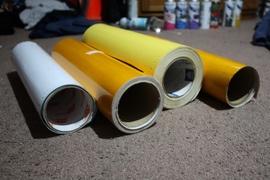 1 Vinyl: A synthetic plastic made from ethylene and chlorine. Vinyl has many applications in the construction industry and it is widely used in sidings, window frames, roofing and gutters, among others
1 Vinyl: A synthetic plastic made from ethylene and chlorine. Vinyl has many applications in the construction industry and it is widely used in sidings, window frames, roofing and gutters, among others
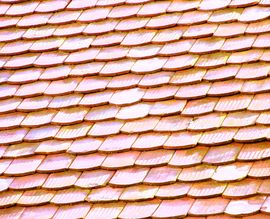 2 Shingles: A smooth, uniform, flat piece of construction material, available in a wide variety of materials and laid in a series of overlapping rows, used to cover the outside of roofs or walls to protect against weather damage and leaks.
2 Shingles: A smooth, uniform, flat piece of construction material, available in a wide variety of materials and laid in a series of overlapping rows, used to cover the outside of roofs or walls to protect against weather damage and leaks.
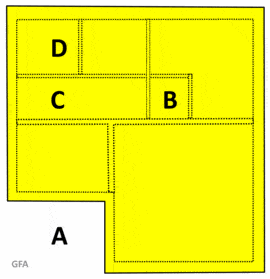 3 Footprint: The entire area of ground covered by a building, including the exterior walls and porch or patio areas
3 Footprint: The entire area of ground covered by a building, including the exterior walls and porch or patio areas
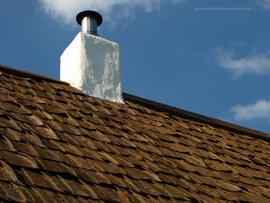 5 Shakes: A rugged flat piece of wooden construction material with at least one grain-split face, generally made of either redwood or cedar, laid in a series of overlapping rows and used to cover the outside of roofs and walls to protect against weather damage and leaks
5 Shakes: A rugged flat piece of wooden construction material with at least one grain-split face, generally made of either redwood or cedar, laid in a series of overlapping rows and used to cover the outside of roofs and walls to protect against weather damage and leaks
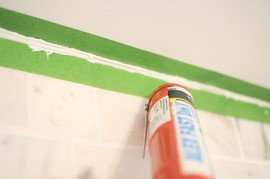 9 Caulking: A chemical sealant used to fill in and seal gaps where two materials join, for example, the tub and tile, to create a watertight and airtight seal. The term "caulking" is also used to refer to the process of applying this type of sealant
9 Caulking: A chemical sealant used to fill in and seal gaps where two materials join, for example, the tub and tile, to create a watertight and airtight seal. The term "caulking" is also used to refer to the process of applying this type of sealant
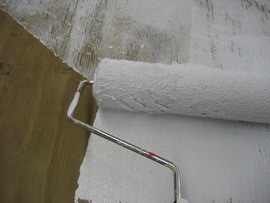 10 Primer: Preparatory coat applied to materials (drywall, wood, metal, etc.) before painting to ensure paint adhesion, extend paint durability, and help seal and protect the surface to be painted
10 Primer: Preparatory coat applied to materials (drywall, wood, metal, etc.) before painting to ensure paint adhesion, extend paint durability, and help seal and protect the surface to be painted
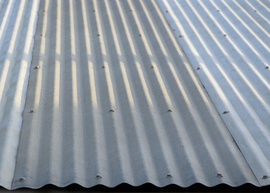 12 Fiber cement: A building material made with cellulose fiber, concrete, and recycled materials such as glass
12 Fiber cement: A building material made with cellulose fiber, concrete, and recycled materials such as glass
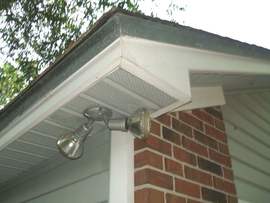 13 Soffits: Construction material, typically composed of vinyl or aluminum, used to enclose the underside of eaves and ceilings
13 Soffits: Construction material, typically composed of vinyl or aluminum, used to enclose the underside of eaves and ceilings
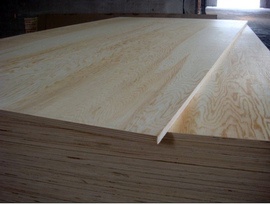 14 Plywood: An engineered construction material manufactured from thin slices of wood glued together in alternating grain patterns for strength
14 Plywood: An engineered construction material manufactured from thin slices of wood glued together in alternating grain patterns for strength
How much does it cost to install vinyl siding in my city?
Cost to install vinyl siding varies greatly by region (and even by zip code). To get free estimates from local contractors, please indicate yours.















